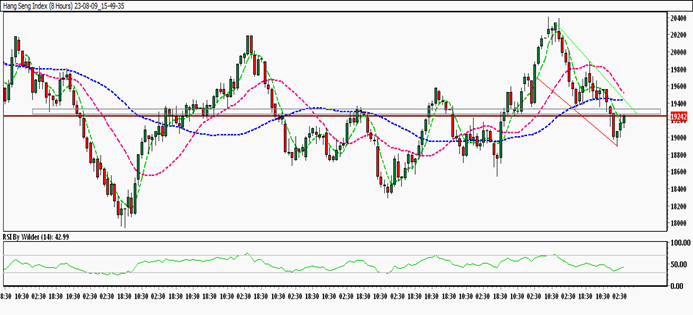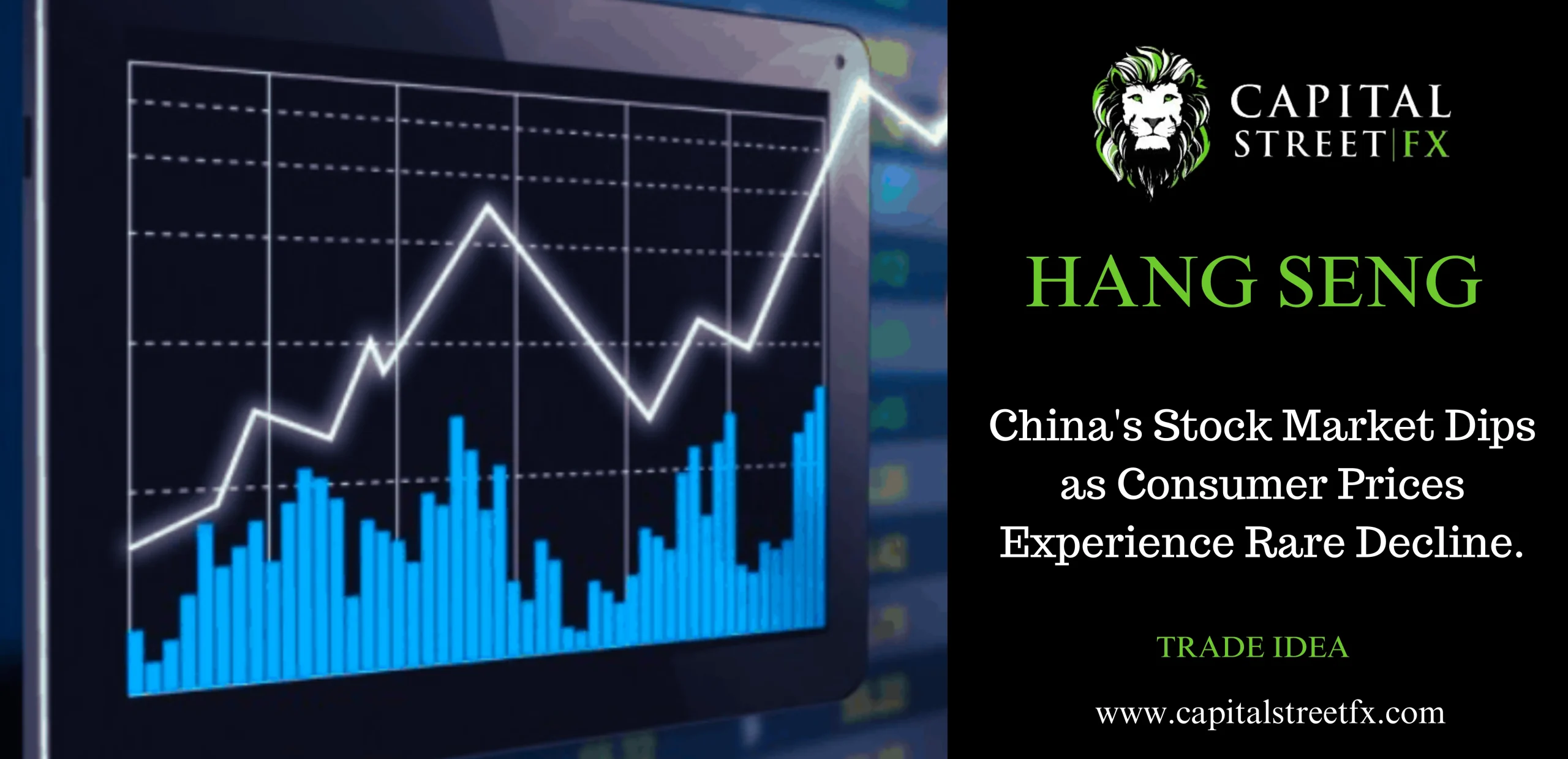China’s Stock Market Dips as Consumer Prices Experience Rare Decline.
In an unexpected turn of events, China’s financial landscape witnessed a significant shift as consumer prices registered a decline, marking the first instance of such an occurrence in over two years. The implications of this occurrence reverberated across China and Hong Kong stock markets, leading to a substantial drop in their indices.
Consumer Prices Take a Surprising Dive
During the month of July, China’s consumer prices experienced an unprecedented negative trajectory, marking a departure from the upward movement that has been the norm for the past 28 months. The notable dip in the Consumer Price Index (CPI) sent ripples of concern through the financial realm.
Stock Markets React Strongly
The reverberations of the unexpected consumer price decline were keenly felt in both China and Hong Kong stock markets. As the news broke, stock values took a tumble, and the Hong Kong Hang Seng Index found itself hovering precariously close to the flatline. Investors and financial experts were caught off guard by this abrupt turn of events.
Analyzing the Numbers
China’s July CPI indicated a contraction of 0.3% in a year-on-year comparison. This figure fell short of the 0.4% projection put forth by economists polled by Reuters. The most recent instance of China experiencing a drop in inflation rates was recorded back in February 2021, making this decline particularly noteworthy. Adding to the surprise, the Producer Price Index (PPI) followed suit, plummeting by 4.4% year on year in July, exceeding economists’ predictions of a 4.1% decrease.
Insights from Financial Gurus
Notable voices from the financial world weighed in on the implications of these developments. Mohamed El-Erian, a prominent economic advisor at Allianz, expressed his concerns about the broader impact of these figures. He highlighted potential implications for China’s growth prospects and the efficacy of conventional stimulus measures. El-Erian’s views were shared via a post on X, the platform formerly known as Twitter.
Hang Seng’s Technical Trajectory

Taking a closer look at the Hang Seng Index, technical analysis reveals interesting trends. The index is currently navigating a downward channel, showcasing a pattern of descending prices. Additionally, it is positioned below both the 20-day and 50-day Simple Moving Averages (SMA), suggesting a bearish sentiment. However, the Relative Strength Index (RSI) indicates a neutral zone, hinting at a balanced market stance. Meanwhile, the Stochastic indicator offers a more optimistic perspective, signaling the possibility of a positive trend.
Immediate Levels to Watch
In terms of immediate levels, the Hang Seng Index faces resistance at 19,346 points. On the flip side, the immediate support level stands at 19,138 points. These levels serve as critical junctures that could dictate the index’s short-term trajectory.
Navigating Hang Seng’s Movements
As the week unfolds, traders and investors grapple with the optimal strategies for navigating the Hang Seng Index. Recent price action has seen a rapid ascent, followed by a modest correction. At present, the index is entrenched within a resistance zone. If this resistance is successfully breached, further upward movement becomes a distinct possibility.
Trading Insights: Strategy and Projections
For those contemplating trading strategies concerning the Hang Seng Index, a potential approach emerges. With a recent pullback and the ongoing attempt to regain upward momentum, traders might consider an entry point around the 19,400 mark. Setting a target at 19,702 points and implementing a stop loss at 19,191 points could provide a balanced risk-reward profile.
Conclusion: Navigating Uncharted Waters
The recent decline in China’s consumer prices and its far-reaching impact on stock markets underscore the interconnected nature of global economies. As financial experts grapple with the implications, traders and investors find themselves navigating uncharted waters, seeking opportunities amid uncertainty. The delicate balance between market dynamics and economic indicators continues to shape the trajectory of financial markets, leaving both professionals and enthusiasts closely watching the developments that lie ahead.
FAQs About China’s Financial Shift
Q1: What triggered the decline in China’s consumer prices?
A1: The decline in consumer prices was an unexpected outcome, with factors like changing market dynamics and supply-demand imbalances potentially contributing.
Q2: How did the stock markets react to the consumer price decline?
A2: The news of the consumer price decline had an immediate and adverse impact on stock values, causing a noticeable dip.
Q3: What is the significance of China’s July CPI contraction?
A3: China’s July CPI contraction of 0.3% is significant because it represents the first instance of negative consumer price growth in over two years.
Q4: How did financial experts perceive these developments?
A4: Prominent figures like Mohamed El-Erian expressed concerns about the broader economic implications, particularly with regard to China’s growth prospects.

